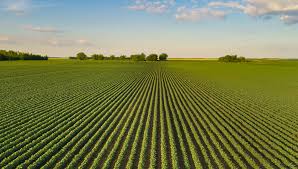
Surging fuel costs, along with higher prices for seeds, packaging, animal feed, fertilizer and other chemicals, has meant “every pass across a field” is more expensive, said Andy Tauer, executive director of public policy for the Indiana Farm Bureau.
He said the main drivers of the increases stem from inflation, global supply chain issues caused by Russia’s invasion of Ukraine and lingering disruptions brought on by COVID-19.
“Some farmers are looking at any opportunity to cut costs so they can continue to maintain a healthy bottom line,” Tauer said. “But at the end of the day … those cost increases will ultimately get passed on to the consumer.”
Because farmers rely heavily on diesel-powered machinery and semi-truck transportation, David Hardin, who manages Hardin Farms near Danville, said rising fuel costs have become a significant out-of-pocket expense.
While some farmers were able to lock in fuel prices before the Ukraine invasion – and in advance of planting spring crops — Hardin said those deals won’t last. With the cost of diesel up $2 a gallon compared to earlier this year, he said that translates to even higher costs for both crop and livestock farmers who will need to purchase more fuel in the coming months.
“This is not going to be a situation that resolves itself quickly,” Hardin said. “As we move through the summer and into the fall, which honestly, for us, we use more fuel during the harvest season than we do for planting, this will impact us.”
Increased fertilizer costs
Major price increases for fertilizer have been the biggest hit to farmers so far, he continued.
For Hardin, nitrogen fertilizer, which many Indiana farmers depend on for corn crops, costs roughly double than it did last year. Fertilizers he’s purchased containing phosphorus — a key ingredient in many animal feeds — have increased by about 50%.
Tauer said fertilizer prices across the board are up for all farmers, between 300% and 500%.
He added that an increasing number of Hoosier farmers have adopted no-till practices to keep nutrients in the soil — decreasing the need for as much fertilizer.
